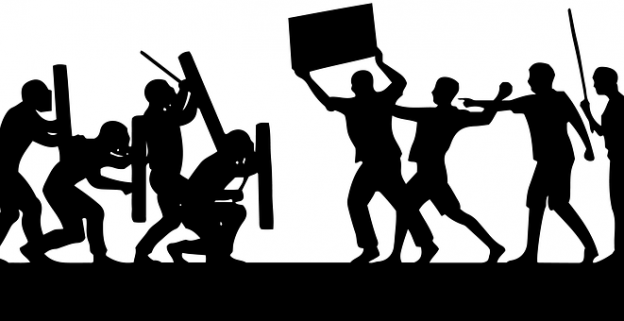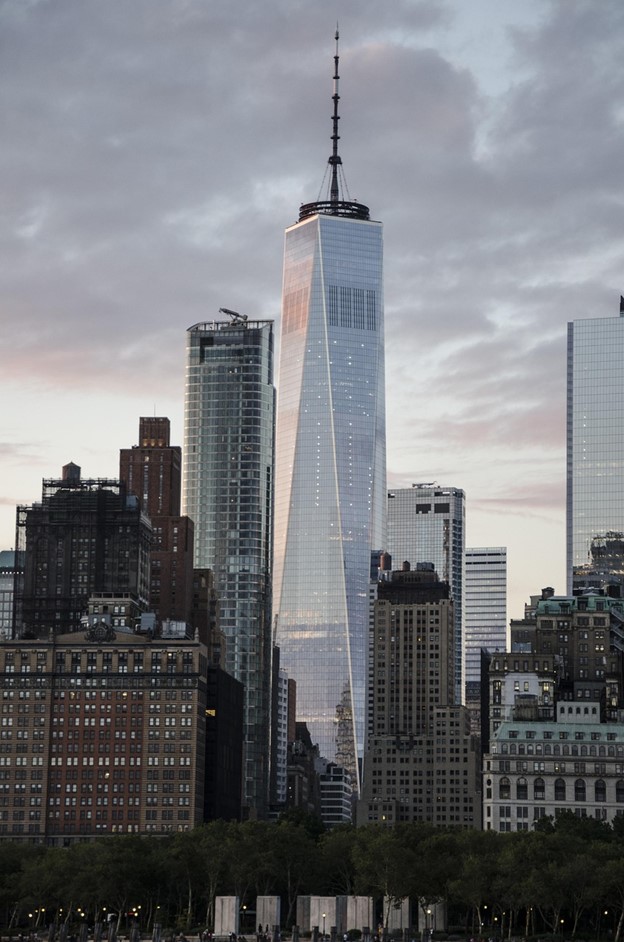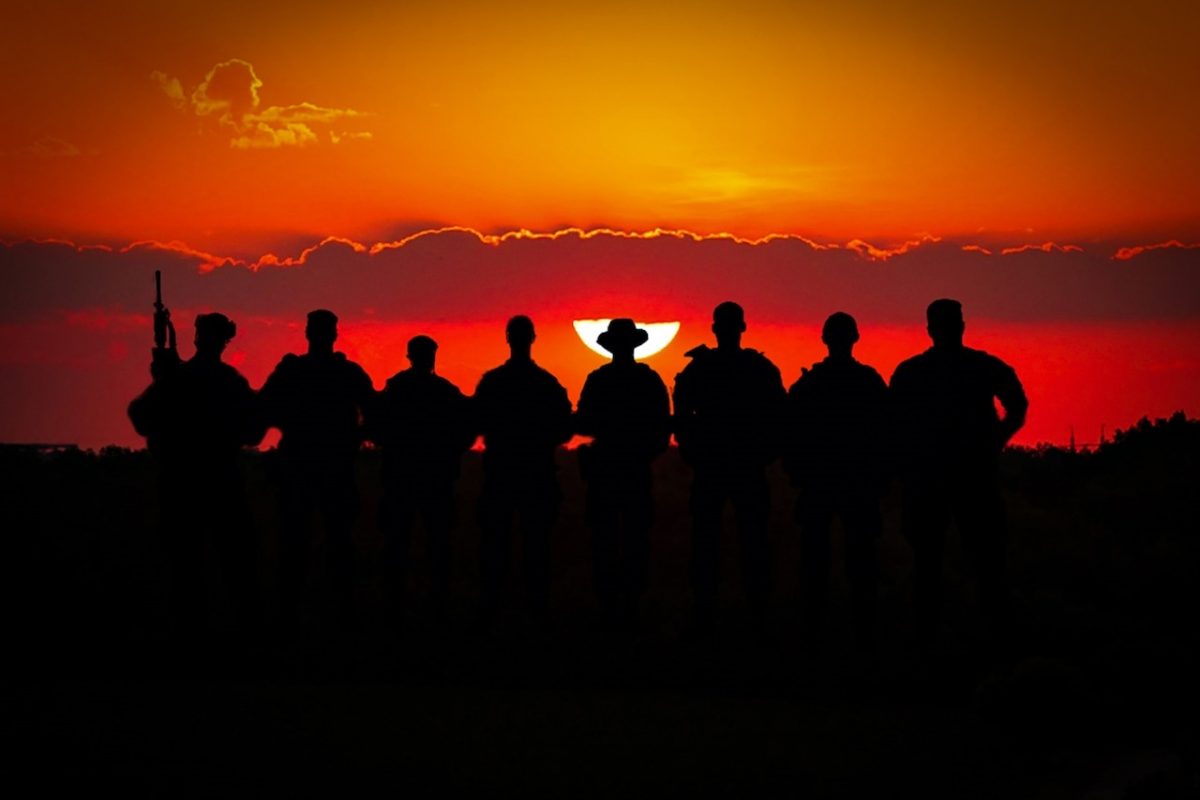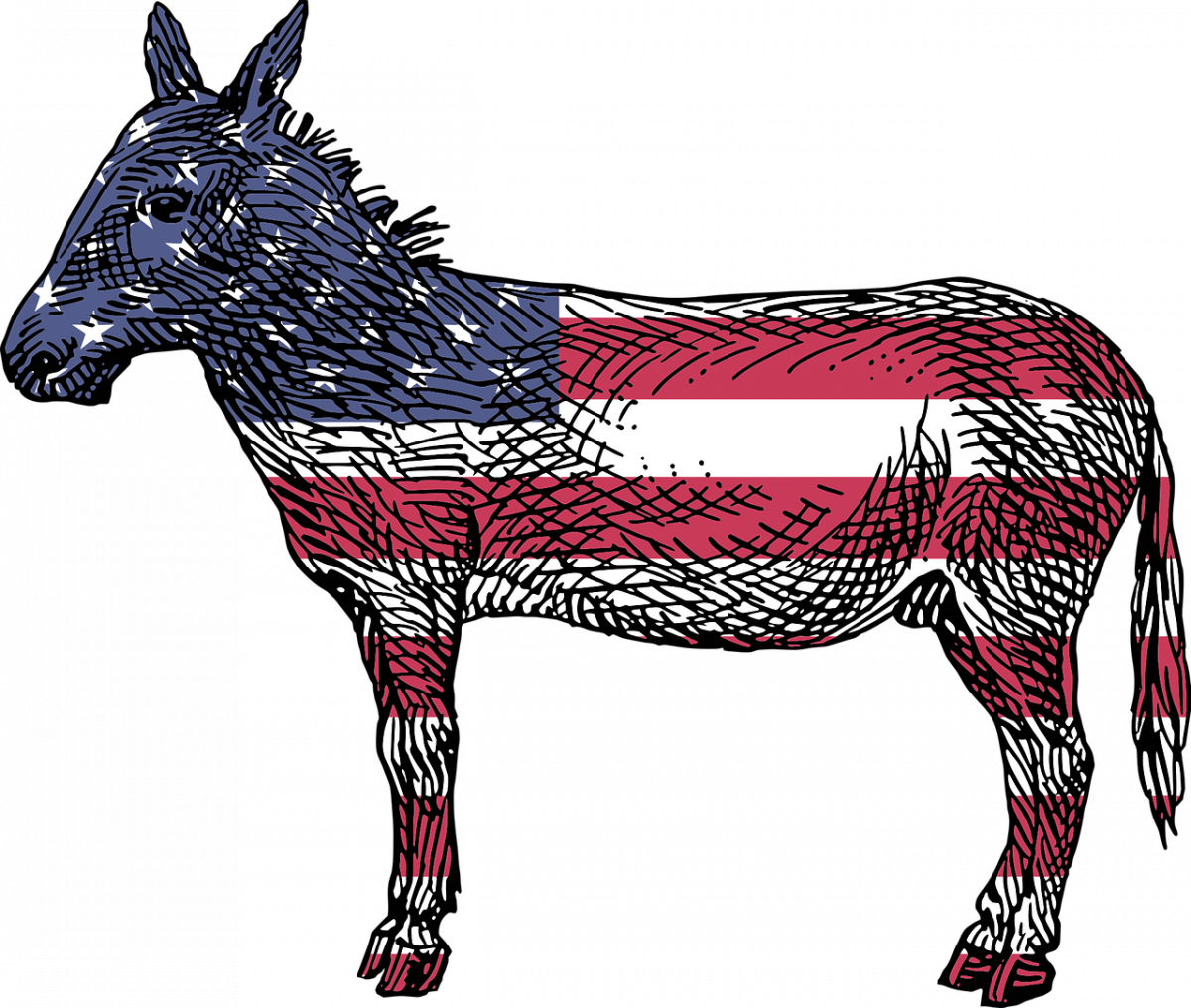The House Foreign Affairs Committee’s GOP members have issued a stunning report outlining the actions by the Biden Administration that led to the deaths of thirteen American We reproduce key excerpts:
Over the course of three years, House Foreign Affairs Committee Republicans, led by Chairman McCaul, have conducted a thorough investigation into the U.S. withdrawal from Afghanistan… The investigation has revealed five primary conclusions:
1.The Biden-Harris administration was determined to withdraw from Afghanistan, with or without the Doha Agreement and no matter the cost. Accordingly, they ignored the conditions in the Doha Agreement, pleas of the Afghan government, and the objections by our NATO allies, deciding to unilaterally withdraw from the country.
2. The Biden-Harris administration prioritized the optics of the withdrawal over the security of U.S. personnel on the ground. For that reason, they failed to plan for all contingencies, including a noncombatant emergency evacuation (NEO) and refused to order a NEO until after the Taliban had already entered Kabul.
3. The Biden-Harris administration’s failure to prepare for a NEO and order a timely NEO created an unsafe environment at HKIA, exposing U.S. Defense Department and State Department personnel to lethal threats and emotional harm. As a result, 13 U.S. servicemembers were murdered by a terrorist attack on August 26, 2021. It was the deadliest day for the U.S. military in Afghanistan since 2012.
4. In the aftermath of the withdrawal, U.S. national security was degraded as Afghanistan once again became a haven for terrorists, including al Qaeda and ISISK. America’s credibility on the world stage was severely damaged after we abandoned Afghan allies to Taliban reprisal killings — the people of Afghanistan we had promised to protect. And the moral injury to America’s veterans and those still serving remains a stain on this administration’s legacy.
5. The Biden-Harris administration misled and, in some instances, directly lied to the American people at every stage of the withdrawal, from before the go-to-zero order until today. This coverup included mid-level administration officials all the way up to the Oval Office. And as this investigation reveals, the National Security Council and NSA Jake Sullivan were of the source of the majority of that misinformation campaign.
The report presents the findings of the committee majority’s investigation into the BidenHarris administration’s withdrawal from Afghanistan in 2021. The U.S. withdrawal from Afghanistan is understood to encompass the U.S. military retrograde, beginning with the “Go to Zero” order officially announced by President Biden on April 14, 2021, through the noncombatant evacuation operation (NEO) ordered by President Biden on August 15, 2021, as well as related planning by the White House, U.S. Department of State, and other federal agencies and their decision-making processes. The withdrawal culminated in the Abbey Gate terrorist attack on August 26, 2021, which killed 13 U.S. servicemembers, wounding another 45, and killed more than 170 Afghan civilians. The withdrawal concluded on August 30, 2021, when the last U.S. military aircraft left Afghanistan.
Over the course of three years, House Foreign Affairs Committee Republicans, led by Chairman McCaul, have conducted a thorough investigation into the U.S. withdrawal from Afghanistan, pursuant to the outlined methodology. The investigation has revealed five primary conclusions:
The Biden-Harris administration was determined to withdraw from Afghanistan, with or without the Doha Agreement and no matter the cost. Accordingly, they ignored the conditions in the Doha Agreement, pleas of the Afghan government, and the objections by our NATO allies, deciding to unilaterally withdraw from the country. The Biden-Harris administration prioritized the optics of the withdrawal over the security of U.S. personnel on the ground. For that reason, they failed to plan for all contingencies, including a noncombatant emergency evacuation (NEO) and refused to order a NEO until after the Taliban had already entered Kabul. The Biden-Harris administration’s failure to prepare for a NEO and order a timely NEO created an unsafe environment at HKIA, exposing U.S. Defense Department and State Department personnel to lethal threats and emotional harm. As a result, 13 U.S. servicemembers were murdered by a terrorist attack on August 26, 2021. It was the deadliest day for the U.S. military in Afghanistan since 2012. In the aftermath of the withdrawal, U.S. national security was degraded as Afghanistan once again became a haven for terrorists, including al Qaeda and ISISK. America’s credibility on the world stage was severely damaged after we abandoned Afghan allies to Taliban reprisal killings — the people of Afghanistan we had promised to protect. And the moral injury to America’s veterans and those still serving remains a stain on this administration’s legacy. The Biden-Harris administration misled and, in some instances, directly lied to the American people at every stage of the withdrawal, from before the go-to-zero order until today. This coverup included mid-level administration officials all the way up to the Oval Office. And as this investigation reveals, the National Security Council and NSA Jake Sullivan were of the source of the majority of that misinformation campaign.
The investigation upends the Biden-Harris administration’s continued claim that they “planned for all contingencies.” Instead, the State Department and White House’s tunnel vision that U.S. Embassy Kabul remain open resulted in a failure to properly prepare for worst case scenarios, including conducting an evacuation under Taliban rule. When that precise scenario manifested, the Biden-Harris administration was caught flat-footed and chaos ensued.
The failure to plan for all contingencies and order a NEO only after the Taliban seized Kabul directly resulted in chaos reigning at Embassy Kabul and HKIA. Droves of classified documents and systems were left behind, and American and Afghan passports were unnecessarily burned as pandemonium enveloped the embassy compound. One Embassy employee concluded, “We know that some of [the classified documents] are being used by the Taliban. Another Embassy employee explained there was no embassy roster available when it came time to evacuate. As a result, the employee went room to room to clear the embassy compound. Indeed, on the day of the evacuation, some embassy personnel were not even aware the Taliban had marched into Kabul. As consequence of the rapid military retrograde — rendering U.S. troop presence to less than 1,000 — and the failure to plan for a NEO, HKIA was overrun, and the airfield was forced to shut down for 48 hours.
Additional issues cropped up at every step of the way during the evacuation because of the Biden-Harris administration’s failure to plan for a NEO, including, but not limited to: There were insufficient military planes to conduct an airlift of this size, and the U.S. Department of Transportation waited until August 20th — five days after the country fell — to allow foreign civil aircrafts to conduct their own flights. Throughout the NEO, logistics operations responsible for the provision of food, medical support, clean water, vehicles, and other critical supplies did not have more than a one-day supply on hand. U.S. government personnel were at great risk of running out of food and water.
“Lily pads” for evacuees were not secured before the NEO began. It was not until August 19th that all three primary lily pads in Qatar, Bahrain, and Kuwait were operable. This delay resulted in multiple operational pauses of the evacuation, limiting the number of Americans and Afghan allies able to escape. To compensate for the Biden-Harris administration’s failure to plan for the inevitable NEO, volunteer organizations across the country mobilized to assist Americans, green card holders, and Afghan allies escape the Taliban. These groups were made up of veterans, active duty servicemembers, journalists, former government officials, congressional staffers, and in some instances, average Americans with no ties to Afghanistan who wanted to do their part. They worked for free at great expense to themselves — emotionally and financially — to track down evacuees across the country, get them through the Taliban checkpoints in Kabul, and finally on a plane to safety.
To compensate for the Biden-Harris administration’s failure to plan for the inevitable NEO, volunteer organizations across the country mobilized to assist Americans, green card holders, and Afghan allies escape the Taliban. These groups were made up of veterans, active duty servicemembers, journalists, former government officials, congressional staffers, and in some instances, average Americans with no ties to Afghanistan who wanted to do their part. They worked for free at great expense to themselves — emotionally and financially — to track down evacuees across the country, get them through the Taliban checkpoints in Kabul, and finally on a plane to safety.
Abbey Gate Attack
The failure to prepare for a NEO had ramifications not only for Americans and allies in Afghanistan, but U.S. personnel on the ground forced to evacuate desperate civilians in a hostile environment. Those concerns were sidelined by the Biden-Harris administration in favor of optics. Rather than concede their negligence, U.S. servicemembers and foreign service officers were directed to prioritize evacuating as many people as possible, no matter the threat posed to their lives.
Threat stream warnings regarding an attack at HKIA were consistent but vague. As a result, personnel on the ground were aware an attack was likely but could not identify a potential attacker with certainty given the breadth and ambiguity of those alerts. Abbey Gate, in particular, was exposed to multiple threats because it served as a main inroad into HKIA. On August 25th, Major General Chris Donahue selected Abbey Gate as being at highest risk of an attack in an assessment shared with General McKenzie. Despite that knowledge, little was done to reinforce protections around the gate. And ultimately, a decision was made by Brigadier General Farrell Sullivan to keep Abbey Gate open, primarily because British forces were still using the gate to evacuate individuals from Baron Hotel into HKIA. At that point, State Department officials on the ground pulled back its consular officers leaving only the U.S. Marines around when the bomb went off at 5:36:52 PM Kabul time on August 26th.
One hundred and eighty-five people were killed in the attack, including 13 U.S. servicemembers. Their names are: Marine Lance Corporal David L. Espinoza Marine Sergeant Nicole L. Gee Marine Staff Sergeant Darin Taylor Hoover Army Staff Sergeant Ryan Christian Knauss Marine Corporal Hunter Lopez Marine Lance Corporal Rylee J. McCollum Marine Lance Corporal Dylan R. Merola Marine Lance Corporal Kareem M. Nikoui Marine Corporal Daegan W. Page Marine Sergeant Johanny Rosario Pichardo Marine Corporal Humberto A. Sanchez Marine Lance Corporal Jared M. Schmitz Navy Corpsman Maxton W. Soviak Countless people were wounded including 45 U.S. servicemembers. It was the deadliest day in Afghanistan for the U.S. military since 2012.
After the Abbey Gate attack, President Biden and Vice President Harris showed disregard and disrespect toward the Gold Star families of the 13 U.S. servicemembers killed at Abbey Gate, and the servicemembers injured in the attack. Almost immediately after the dignified transfer at Dover Air Base for 11 of the 13 servicemembers, media outlets reported President Biden “checked his watch multiple times” during the event. The White House attempted to deny the allegation, until photos surfaced proving he did. Almost three years later, Ms. Psaki continued to perpetuate the lie that President Biden did not check his watch in her memoir. After media reports debunked her falsehood, she was forced to retract it.
The Fallout
The fallout from the ill-advised withdrawal and ill-prepared NEO created a tidal wave of problems in Afghanistan, the United States, and around the world.
Seven billion dollars of U.S. weapons and up to $57 million in U.S. currency were left behind in Afghanistan for the Taliban to use and profit off of by selling to other terrorist regimes. Despite their claims of amnesty toward former Afghan government officials, the Taliban continue to carry out systematic and brutal reprisal killings. In fact, a NATO report written by the Defence Education Enhancement Programme found the Taliban were using U.S. military biometric devices and databases to hunt down America’s Afghan allies.
The catastrophic withdrawal at the hands of the Biden-Harris administration has created a crisis within the U.S. military and among American veterans. Recruitment and retention within the military are down, with experts pointing to the withdrawal as a significant factor. Servicemembers and veterans are also facing devastating moral injury. Each day, they are forced to reckon with the reality that terrorists they fought against for two decades — who their brothers and sisters died to defeat — are once again in power. They are also forced to stand by while their Afghan allies are trapped in Afghanistan, at the mercy of the Taliban. Scott Mann, the founder of Task Force Pineapple and a Green Beret testified to the committee, “Relinquishing Afghanistan…has become a moral injury on our veterans and military families. A moral injury is an injury to the soul. A violation of what we know to be right by leaders whom we trusted.”
Fears by the military regarding the United States’ limited over-the-horizon capabilities postwithdrawal have also come to fruition. The Biden-Harris administration has not conducted a single strike against ISIS-K since 2021. Meanwhile, according to a March 2024 Washington Institute study, “In the past year, [ISIS-K] has planned twenty-one external plots or attacks in nine countries, compared to eight plots or attacks in the previous year and just three between 2018 and March 2022.” The Biden-Harris administration’s willful blindness has left the United States once again vulnerable to attacks emanating from Afghanistan.
Indeed, on June 11, 2024, the FBI’s Joint Terrorism Task Force arrested eight individuals with ties to ISIS-K who entered the U.S. illegally through the southern border. That same month, the Department of Homeland Security identified over 400 persons of interest from Central Asia who had illegally crossed the U.S. southern border with the help of an ISISrelated smuggling network. Our adversaries, like Russia, China, and Iran, saw weakness during the chaotic and deadly evacuation, emboldening them. Less than one year later, Russia launched a full invasion of Ukraine. Today, Iran’s proxies are conducting a brutal war against our ally Israel, attacking our servicemembers in the region, and threatening global trade in the Red Sea. And China continues to ratchet up aggression in the Indo Pacific, including against Taiwan and the Philippines.
